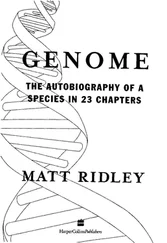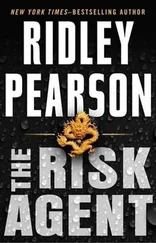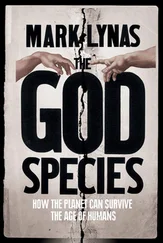RNA is a chemical substance that links the two worlds of DNA and protein. It is used mainly in the translation of the message from the alphabet of DNA to the alphabet of proteins. But in the way it behaves, it leaves little doubt that it is the ancestor of both. RNA was Greece to DNA’s Rome: Homer to her Virgil.
RNA was the word. RNA left behind five little clues to its priority over both protein and DNA. Even today, the ingredients of DNA are made by modifying the ingredients of RNA, not by a more direct route. Also DNA’s letter Ts are made from RNA’s letter Us. Many modern enzymes, though made of protein, rely on small molecules of RNA to make them work. Moreover, RNA, unlike DNA and protein, can copy itself without assistance: give it the right ingredients and it will stitch them together into a message. Wherever you look in the cell, the most primitive and basic functions require the presence of RNA. It is an RNA-dependent enzyme that takes the message, made of RNA, from the gene. It is an RNA-containing machine, the ribosome, that translates that message, and it is a little RNA molecule that fetches and carries the amino acids for the translation of the gene’s message. But above all, RNA – unlike DNA – can act as a catalyst, breaking up and joining other molecules including RNAs themselves. It can cut them up, join the ends together, make some of its own building blocks, and elongate a chain of RNA. It can even operate on itself, cutting out a chunk of text and splicing the free ends together again. 7
The discovery of these remarkable properties of RNA in the early 1980s, made by Thomas Cech and Sidney Altman, transformed our understanding of the origin of life. It now seems probable that the very first gene, the ‘ur-gene’, was a combined replicator–catalyst, a word that consumed the chemicals around it to duplicate itself. It may well have been made of RNA. By repeatedly selecting random RNA molecules in the test tube based on their ability to catalyse reactions, it is possible to ‘evolve’ catalytic RNAs from scratch – almost to rerun the origin of life. And one of the most surprising results is that these synthetic RNAs often end up with a stretch of RNA text that reads remarkably like part of the text of a ribosomal RNA gene such as the 5S gene on chromosome 1.
Back before the first dinosaurs, before the first fishes, before the first worms, before the first plants, before the first fungi, before the first bacteria, there was an RNA world – probably somewhere around four billion years ago, soon after the beginning of planet earth’s very existence and when the universe itself was only ten billion years old. We do not know what these ‘ribo-organisms’ looked like. We can only guess at what they did for a living, chemically speaking. We do not know what came before them. We can be pretty sure that they once existed, because of the clues to RNA’s role that survive in living organisms today. 8
These ribo-organisms had a big problem. RNA is an unstable substance, which falls apart within hours. Had these organisms ventured anywhere hot, or tried to grow too large, they would have faced what geneticists call an error catastrophe – a rapid decay of the message in their genes. One of them invented by trial and error a new and tougher version of RNA called DNA and a system for making RNA copies from it, including a machine we’ll call the proto-ribosome. It had to work fast and it had to be accurate. So it stitched together genetic copies three letters at a time, the better to be fast and accurate. Each threesome came flagged with a tag to make it easier for the proto-ribosome to find, a tag that was made of amino acid. Much later, those tags themselves became joined together to make proteins and the three-letter word became a form of code for the proteins – the genetic code itself. (Hence to this day, the genetic code consists of three-letter words, each spelling out a particular one of twenty amino acids as part of a recipe for a protein.) And so was born a more sophisticated creature that stored its genetic recipe on DNA, made its working machines of protein and used RNA to bridge the gap between them.
Her name was Luca, the Last Universal Common Ancestor. What did she look like, and where did she live? The conventional answer is that she looked like a bacterium and she lived in a warm pond, possibly by a hot spring, or in a marine lagoon. In the last few years it has been fashionable to give her a more sinister address, since it became clear that the rocks beneath the land and sea are impregnated with billions of chemical-fuelled bacteria. Luca is now usually placed deep underground, in a fissure in hot igneous rocks, where she fed on sulphur, iron, hydrogen and carbon. To this day, the surface life on earth is but a veneer. Perhaps ten times as much organic carbon as exists in the whole biosphere is in thermophilic bacteria deep beneath the surface, where they are possibly responsible for generating what we call natural gas. 9
There is, however, a conceptual difficulty about trying to identify the earliest forms of life. These days it is impossible for most creatures to acquire genes except from their parents, but that may not always have been so. Even today, bacteria can acquire genes from other bacteria merely by ingesting them. There might once have been widespread trade, even burglary, of genes. In the deep past chromosomes were probably numerous and short, containing just one gene each, which could be lost or gained quite easily. If this was so, Carl Woese points out, the organism was not yet an enduring entity. It was a temporary team of genes. The genes that ended up in all of us may therefore have come from lots of different ‘species’ of creature and it is futile to try to sort them into different lineages. We are descended not from one ancestral Luca, but from the whole community of genetic organisms. Life, says Woese, has a physical history, but not a genealogical one. 10
You can look on such a conclusion as a fuzzy piece of comforting, holistic, communitarian philosophy – we are all descended from society, not from an individual species – or you can see it as the ultimate proof of the theory of the selfish gene: in those days, even more than today, the war was carried on between genes, using organisms as temporary chariots and forming only transient alliances; today it is more of a team game. Take your pick.
Even if there were lots of Lucas, we can still speculate about where they lived and what they did for a living. This is where the second problem with the thermophilic bacteria arises. Thanks to some brilliant detective work by three New Zealanders published in 1998, we can suddenly glimpse the possibility that the tree of life, as it appears in virtually every textbook, may be upside down. Those books assert that the first creatures were like bacteria, simple cells with single copies of circular chromosomes, and that all other living things came about when teams of bacteria ganged together to make complex cells. It may much more plausibly be the exact reverse. The very first modern organisms were not like bacteria; they did not live in hot springs or deep-sea volcanic vents. They were much more like protozoa: with genomes fragmented into several linear chromosomes rather than one circular one, and ‘polyploid’ – that is, with several spare copies of every gene to help with the correction of spelling errors. Moreover, they would have liked cool climates. As Patrick Forterre has long argued, it now looks as if bacteria came later, highly specialised and simplified descendants of the Lucas, long after the invention of the DNA-protein world. Their trick was to drop much of the equipment of the RNA world specifically to enable them to live in hot places. It is we that have retained the primitive molecular features of the Lucas in our cells; bacteria are much more ‘highly evolved’ than we are.
Читать дальше












